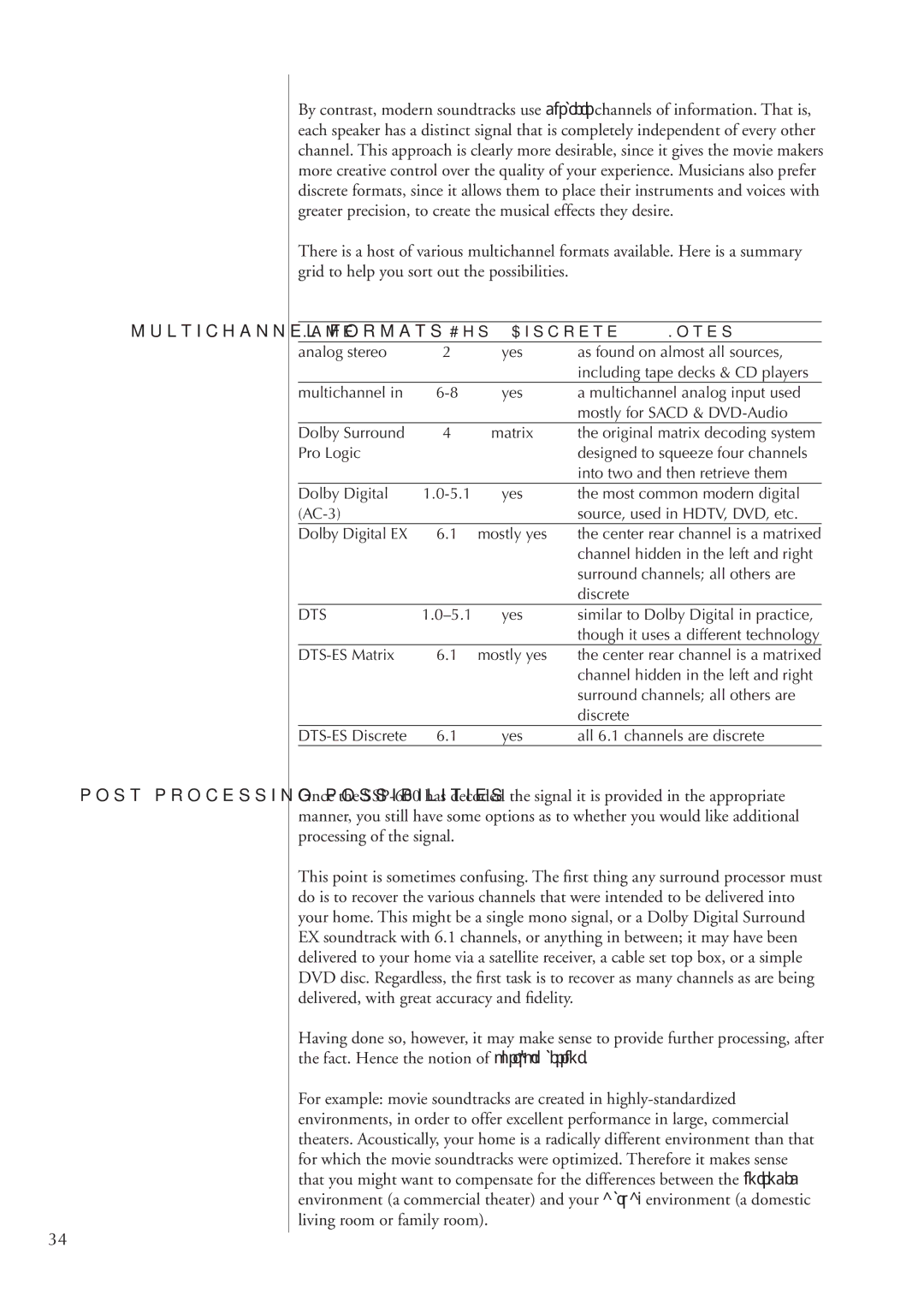multichannel formats
post-processing possibilities
34
By contrast, modern soundtracks use discrete channels of information. That is, each speaker has a distinct signal that is completely independent of every other channel. This approach is clearly more desirable, since it gives the movie makers more creative control over the quality of your experience. Musicians also prefer discrete formats, since it allows them to place their instruments and voices with greater precision, to create the musical effects they desire.
There is a host of various multichannel formats available. Here is a summary grid to help you sort out the possibilities.
Name | # Chs | Discrete? | Notes |
analog stereo | 2 | yes | as found on almost all sources, |
|
|
| including tape decks & CD players |
multichannel in | yes | a multichannel analog input used | |
|
|
| mostly for SACD & |
Dolby Surround | 4 | matrix | the original matrix decoding system |
Pro Logic |
|
| designed to squeeze four channels |
|
|
| into two and then retrieve them |
Dolby Digital | yes | the most common modern digital | |
|
| source, used in HDTV, DVD, etc. | |
Dolby Digital EX | 6.1 | mostly yes | the center rear channel is a matrixed |
|
|
| channel hidden in the left and right |
|
|
| surround channels; all others are |
|
|
| discrete |
DTS | yes | similar to Dolby Digital in practice, | |
|
|
| though it uses a different technology |
6.1 | mostly yes | the center rear channel is a matrixed | |
|
|
| channel hidden in the left and right |
|
|
| surround channels; all others are |
|
|
| discrete |
6.1 | yes | all 6.1 channels are discrete |
Once the
This point is sometimes confusing. The first thing any surround processor must do is to recover the various channels that were intended to be delivered into your home. This might be a single mono signal, or a Dolby Digital Surround EX soundtrack with 6.1 channels, or anything in between; it may have been delivered to your home via a satellite receiver, a cable set top box, or a simple DVD disc. Regardless, the first task is to recover as many channels as are being delivered, with great accuracy and fidelity.
Having done so, however, it may make sense to provide further processing, after the fact. Hence the notion of
For example: movie soundtracks are created in
